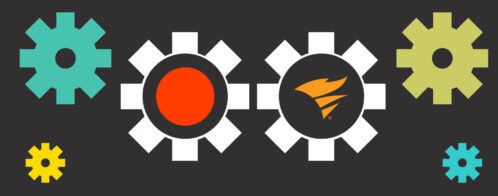Loggly Q&A: Bernard Golden Talks About IaaS and Cloud Applications

Bernard Golden is Vice President, Strategy for ActiveState Software, the leading independent provider of the open source CloudFoundry PaaS solution. Prior to ActiveState, Golden served as Senior Director, Enterprise Solutions at Dell, which he joined when it acquired Enstratius, a cloud management software company. He is a frequent speaker on cloud topics, serves as the Cloud Computing Advisor for CIO and is author of four books on virtualization and cloud computing, including the recently published “Amazon Web Services for Dummies” (2013). Follow him on twitter: @bernardgolden.
Loggly: What’s piquing your interest right now in terms of new services or features introduced by cloud IaaS leaders like AWS? And how will end users benefit?
Golden: There are some new things are in the area of scale from Google and Microsoft, and also the ongoing price wars. In terms of scale, both Google and Microsoft are investing billions of dollars in building out more data centers and connecting them with dedicated fiber links as well as increasing the breadth of their services. In effect, we’re now seeing some cloud providers stepping up to match Amazon’s scale.
Turning to the importance of the ongoing price wars, people underestimate the impact of dropping cloud computing costs. It’s not just that there’s a lot you can do with cheaper services but it’s going to engender end user innovation. Amazon Kinesis is a new service I’m watching. It is a real-time event processing technology, and it’s going to be a great building block for the Internet of Things. Depending on the device alert, you can imagine thousands or millions of events in one day. Think about the door into an office building. A company that wants to monitor that traffic needs to collect lots of data fast and process it in real time. It’s pretty hard to scale that manually, but with Kinesis, you can capture hundreds of thousands of events and tune resources according to the demand. AWS has also hired a number of hardware designers and is contracting directly with manufacturers in Taiwan to design servers. That gives them some cost benefits but they can also get designs that are customized for their use profiles. They don’t need USB drives for instance, because across 100,000 ports that can really add up in terms of electricity usage. I predict that with developments like this, we’ll see 30% price decreases year-over-year for cloud services.
Loggly: And for log management, what are the benefits of these cloud advancements?
Golden: The nature of applications running today is much more complex than previous generations. The emerging micro-service application architecture is very complex – many small services that are aggregated to implement an application. This design pattern supports more robust and scalable apps, but imposes more complexity than the traditional single-stack application architectures. Leveraging a micro-services architecture makes logging critical because there are so many application components operating simultaneously. The individual services execute tremendous numbers of operations, and records of these operations have to be captured in logs. Logs are getting so much bigger, and it’s important to manage and mine them. Yet most IT organizations today are still like the cobblers’ kids who never have the best shoes. There are always constraints in budgets, but with cloud computing, the constraints are not as great. That means you can capture more logs versus throwing them away. You have enough processing power to perform log analytics. You can actually make use of all this log data that systems are collecting, and use the data to improve operations.
Loggly: Log data has the potential to improve IT operations/infrastructure in the cloud, but what challenges remain?
Golden: I think it’s because log usage is still too limited. IT organizations still rely on a person to sort through them, and so they can only be reactive. Going back to the door analogy, let’s say the property management company wants to analyze foot traffic and correlate that with electricity usage in the building. That’s a lot different than simply reacting to an open door. Newer companies that think about data from the beginning are more open to analyzing log data in this more advanced way instead of just using it to solve an immediate problem. It’s both a technical challenge and a mindset.
Loggly: What do enterprises struggle with the most when trying to manage and monitor their cloud applications or in working with their IaaS partners?
Golden: One of the biggest challenges is that managers look at Amazon or Google and they think: “This is the same as managing something on the inside; but now it’s running outside of our data center.” But companies such as Google operate differently, and big companies moving to the cloud often bring a set of assumptions that don’t line up. For instance, in your own data center, you might buy the best equipment that you can to manage risk. Yet a cloud service data center is going to think about redundancy, and how to grow and shrink on demand. The AWS rule is that, something breaks all the time when you have all those servers running. So to deal with that, you’ve got to have the ability to store multiple copies of each object using S3 storage, so when a failure happens they have backup copies.
Loggly: What do you see as the “next wave” of cloud innovations or an emerging trend in cloud IaaS?
Golden: I don’t have a crystal ball, but I think that we will see more focus on the Internet of Things, and services surrounding it. There will be more use of analytics solutions that are preconfigured for the environment, such as Amazon’s Redshift data warehousing service. I can imagine a cloud provider giving a code or a chip that a business can embed in their devices that then communicates back with the cloud service to streamline the connectivity. So a company that wants to create a Nest-like home device won’t have to create all the “plumbing” to connect it to the vendor’s backend processing system, but will be able to leverage the embedded communication capabilities. That means the company can focus on the business logic, not how to connect their new device with the cloud or how to manage the logs that the smart shirt is generating.
The Loggly and SolarWinds trademarks, service marks, and logos are the exclusive property of SolarWinds Worldwide, LLC or its affiliates. All other trademarks are the property of their respective owners.

Bernard Golden

